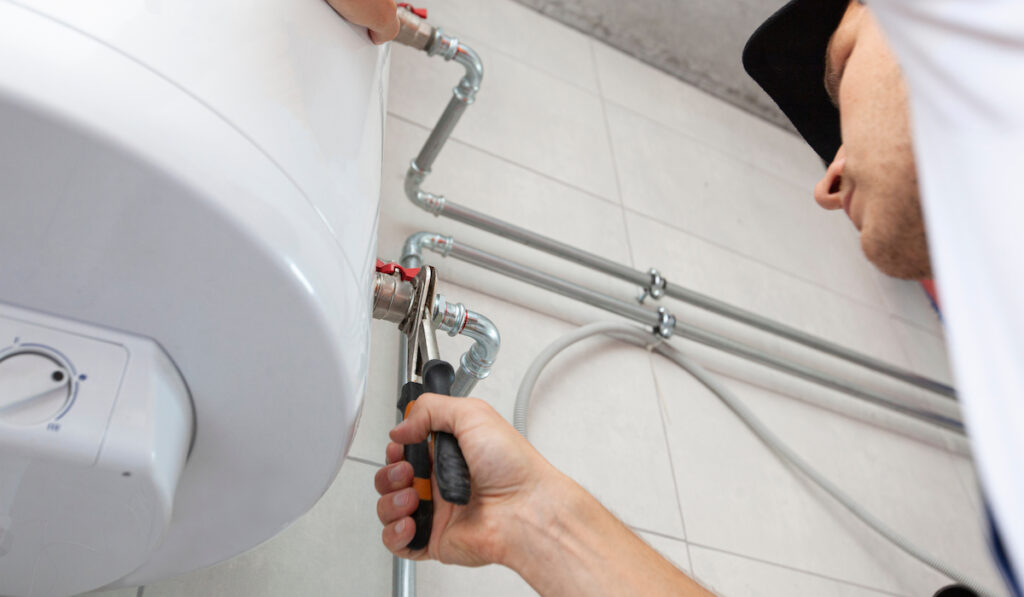Almost everyone has their personal thinking with regards to How to Maintain Your Water Heater & Prolong its Life.

Warm water is crucial for day-to-day convenience, whether it's for a revitalizing shower or cleaning meals. To guarantee your warm water system runs successfully and lasts much longer, normal upkeep is crucial. This write-up gives practical tips and understandings on exactly how to preserve your home's warm water system to avoid disruptions and costly repair work.
Intro
Keeping your home's hot water system might seem complicated, however with a couple of basic actions, you can guarantee it runs smoothly for years to find. This overview covers every little thing from recognizing your warm water system to do it yourself upkeep tips and knowing when to hire specialist aid.
Value of Preserving Your Hot Water System
Regular maintenance not just expands the life-span of your warm water system however also ensures it runs successfully. Ignoring upkeep can result in decreased efficiency, greater power expenses, and even premature failing of the system.
Indicators Your Hot Water System Needs Upkeep
Knowing when your hot water system requires interest can avoid major concerns. Keep an eye out for indications such as inconsistent water temperature level, odd noises from the heater, or corroded water.
Comprehending Your Hot Water System
Prior to diving right into maintenance tasks, it's handy to comprehend the fundamental parts of your warm water system. Normally, this consists of the water heater itself, pipes, anode rods, and temperature level controls.
Month-to-month Upkeep Tasks
Routine monthly checks can help capture small problems before they rise.
Purging the Hot Water Heater
Flushing your water heater gets rid of debris accumulation, improving efficiency and lengthening its life.
Monitoring and Changing Anode Rods
Anode poles avoid corrosion inside the container. Checking and replacing them when worn out is critical.
Evaluating and Changing Temperature Setups
Changing the temperature level settings makes certain ideal efficiency and security.
Do It Yourself Tips for Maintenance
You can execute a number of upkeep tasks on your own to keep your warm water system in top problem.
Checking for Leaks
Consistently check pipes and links for leaks, as these can bring about water damage and greater expenses.
Testing Stress Relief Valves
Examining the pressure relief valve guarantees it functions properly and avoids too much pressure build-up.
Protecting Pipelines
Protecting warm water pipes lowers warm loss and can conserve energy.
When to Call a Specialist
While DIY upkeep is useful, some problems call for expert expertise.
Complex Concerns Requiring Expert Help
Examples consist of significant leaks, electrical troubles, or if your water heater is constantly underperforming.
Routine Expert Upkeep Advantages
Expert maintenance can include detailed examinations, tune-ups, and guaranteeing compliance with safety and security standards.
Conclusion
Regular upkeep of your home's warm water system is important for effectiveness, long life, and cost savings. By adhering to these tips and understanding when to look for specialist help, you can guarantee a trusted supply of hot water without unexpected interruptions.
How to Maintain an Instant Hot Water Heater
Before tinkering with your hot water heater, make sure that it’s not powered on. You also have to turn off the main circuit breaker and shut off the main gas line to prevent accidents. Also turn off the water valves connected to your unit to prevent water from flowing into and out of the appliance. 2. When you’re done, you have to detach the purge valves’ caps. These look like the letter “T†and are situated on either side of the water valves. Doing so will release any pressure that has accumulated inside the valves while at the same time avoid hot water from shooting out and burning your skin. 3. When the purge valves’ caps are removed, you have to connect your hosing lines to the valves. Your unit should have come with three hoses but if it didn’t, you can purchase these things from any hardware or home repair shops. You can also get them from retail stores that sell water heating systems. Read the user’s manual and follow it to complete this task properly. When the hosing lines are connected, open the purge port’s valves. 4. You should never use harsh chemical cleaners or solutions when cleaning your unit. Make use of white vinegar instead. It should be undiluted and you’ll probably use about 2 gallons. 5. Now flush your water heater. This task should probably take about 40 minutes. We can’t give you specific directions for this because the procedure is carried out depending on the type, model and brand of your heater. With that being said, refer to the user’s manual. 6. When you’re done draining the unit, you have to turn off the purge port valves again. Remove the hosing lines that you earlier installed on each of the water valves. Put the valve caps (purge port) back in their respective places and be very careful so as not to damage the rubber discs that are found inside these caps. 7. Now that everything’s back in place, check your user’s manual again to find out how to reactivate your water heating system. 8. Once it is working, turn one of your hot water faucets on just to let air pass through the heater’s water supply pipes. Leave the tap on until water flows smoothly out of it. https://www.orrplumbing.com/blog/2014/september/how-to-maintain-an-instant-hot-water-heater/

Hopefully you enjoyed our post on What Kind of Maintenance Do Water Heaters Need?. Thanks a ton for finding the time to browse our posting. Kindly pause to promote this blog entry if you enjoyed reading it. Many thanks for your time. Return soon.
Visit Our Website